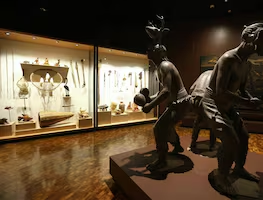By Giselle Rodríguez
The 20 years that Sidartha Siliceo has spent playing the sitar are noticeable on his finger tips, because he has grooves created by the strings.
In an interview with EL UNIVERSAL, he explained that his fascination with the instrument started by chance, when he met the late Ravi Shankar, the greatest sitar player of the 20th century, when he came to Mexico to play at Bellas Artes in 1995.
“He was half deaf on one ear, so when a friend of mine introduced me to him, he told him my name was Sidartha, but he understood that I played the sitar. After clarifying the mix up he told me: ´Well, with those strong hands you should be a sitar player', so I ended up studying with him in San Diego, where he lived because he couldn't stand India's hot weather.”
After wining an ICCR scholarship to study at Gandharva Mahavidyalaya Institute in India, he moved over there and continued to take classes with Ravi Shankar every time he traveled to his homeland during the winter. By 2000 he had become the only Mexican to graduate in music in India itself. Later, he studied his masters at Rotterdam Conservatory and in 2008 he presented his PHD at the Bhathande Institute in India.
For this, he had to travel to India for three years in a row to defend his dissertation, on the influence of Indian music on Middle Eastern and European music.
According to Sidartha several nomad tribes from western India took the knowledge of Indian music and philosophy to Byzantium, where they converted to Islam in the 9th century and were forced to learn Middle Eastern music. From there they moved to Eastern Europe and when Hungary stopped them, they went to the North of Africa, from where they eventually crossed to the Iberian Peninsula. He explained that this is how the natural tuning moved along the Silk Road and arrived in the Americas, when the Spanish conquered Mexico and other areas of the region.
Sidartha, who has also composed music for 12 movies and produced seven CDs, is not only the only Mexican but also the only Latin American with a PhD in Indian music, and one of the only six foreigners in achieving such a great feat, that took him 16 years of his life. He considers that the greatest achievement of a musician is to let music play itself through you, instead of you playing it.
To celebrate his 20-year-long music career, Sidartha is offering a series of concerts with his latest project: Satya Mantra. Satya means “truth” in Sanskrit while mantra is a word or group of words believed to have magical or spiritual power. The trio, founded in 2015, is composed of Sidartha on the sitar, Luis Miguel Costero, one of the first Mexicans to play the tabla -an Indian percussion instrument- and Sofía Zumbado, who has made the soprano saxophone sound like an Eastern instrument.
Their next show is on December 13 at 17:00 hrs. at Sala Manuel M. Ponce in Mexico City's Palacio de Bellas Artes.










